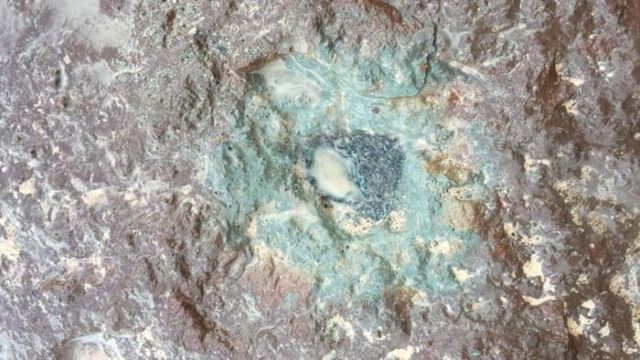New type of meteorite, evidence of a 470-million-year-old smash, linked to ancient asteroid collision.
Scientists at the University of California Davis (UC Davis) found the meteorite, dubbed Österplana 065, at a quarry in Sweden, slammed into the Earth 470 million years ago.
Above, the black, grainy meteorite embedded in rock from a Swedish quarry fell to Earth 470 million years ago. Chemically distinct from any meteorite yet discovered, it is likely debris from a massive collision in the asteroid belt. Credit Qing-zhu Yin, UC Davis
The meteorite, Ost 65, accompanied by a hail of 100 other common meteorites known as L type chondrites, one of the more common types of meteorites to be found on Earth (and maybe even Mars).
The collision, scientists reported June 14 in the journal Nature Communications, sent debris falling to Earth over about a million years and may have influenced a great diversification of life in the Ordovician Period. One of the objects involved in this collision is well-known: It was the source of L-chondrites, still the most common type of meteorite. But the identity of the object that hit it has been a mystery.
Study co-author Qing-zhu Yin, professor of geochemistry and planetary sciences at the University of California, Davis, said:
“In our entire civilization, we have collected over 50,000 meteorites, and no one has seen anything like this one before. Discovering a new type of meteorite is very, very exciting.”
Ost 65 was discovered in Sweden’s Thorsberg quarry, source of more than 100 fossil meteorites. Measuring just under 4 inches wide, it looks like a gray cow patty plopped into a pristine layer of fossil-rich pink limestone. The Ost 65 rock is called a fossil meteorite because the original rock is almost completely altered except for a few hardy minerals — spinels and chromite. Analyses of chromium and oxygen isotopes in the surviving minerals allowed the researchers to conclude the Ost 65 meteorite is chemically distinct from all known meteorite types.
source UC Davis






Leave A Comment